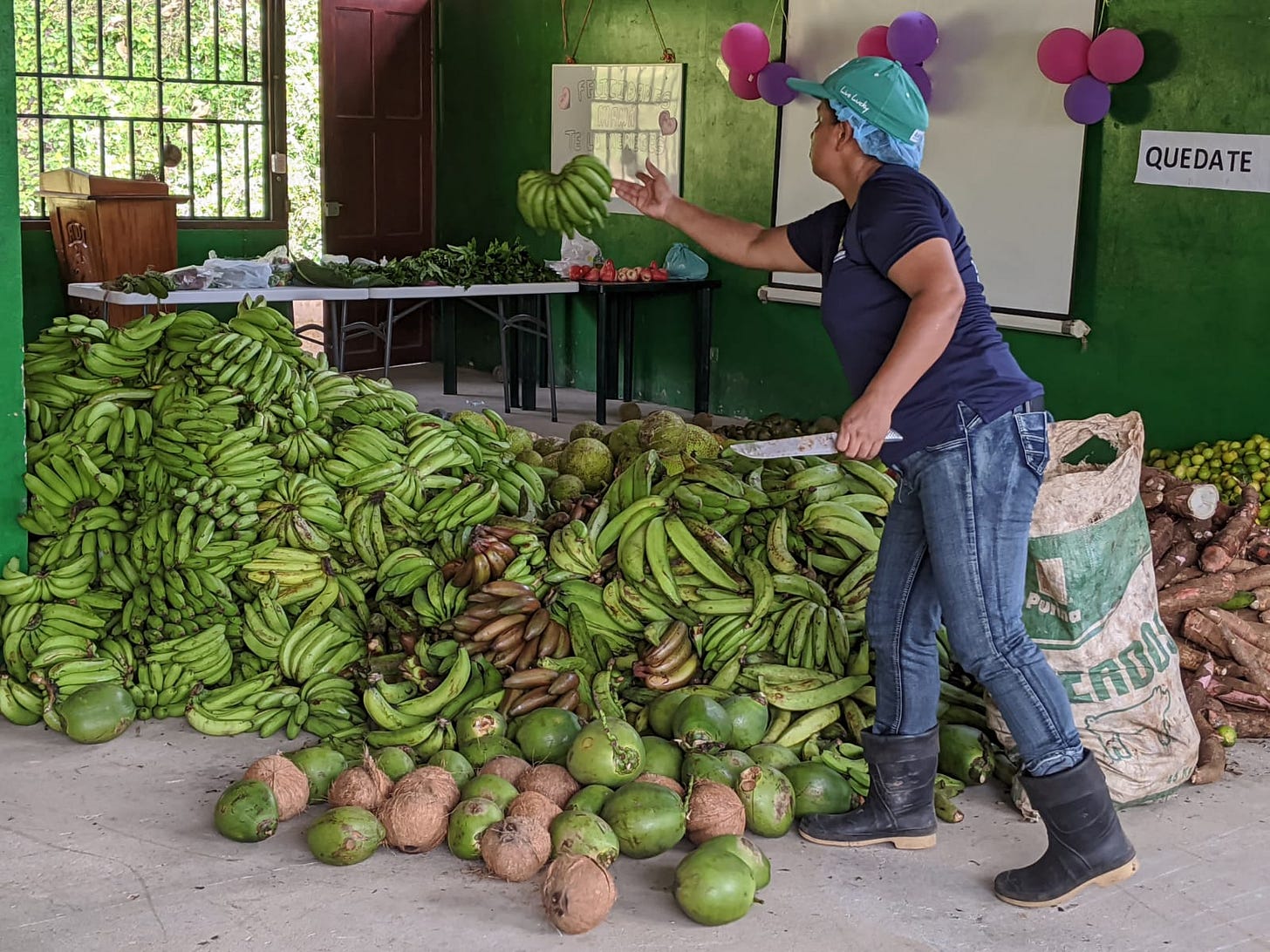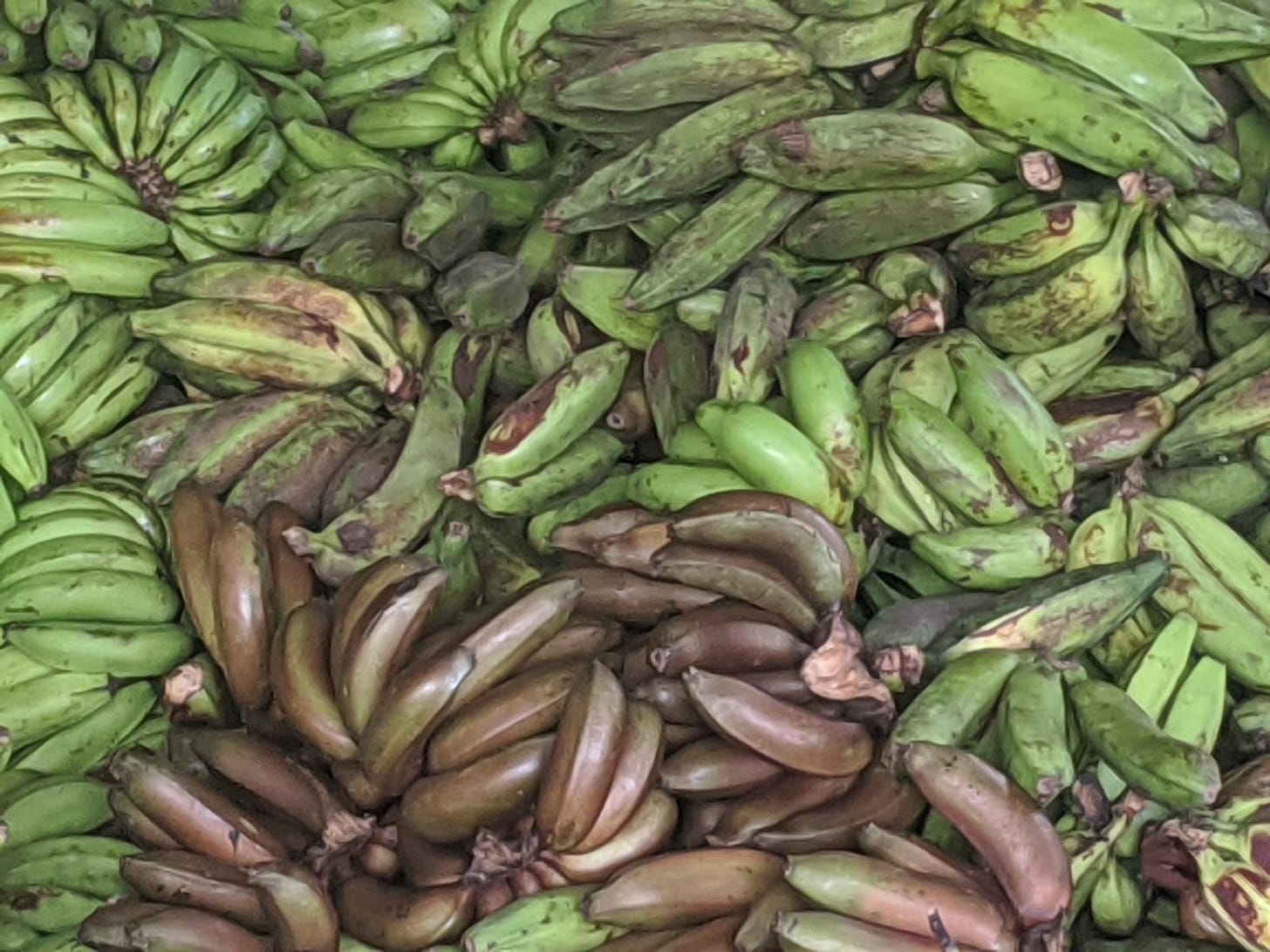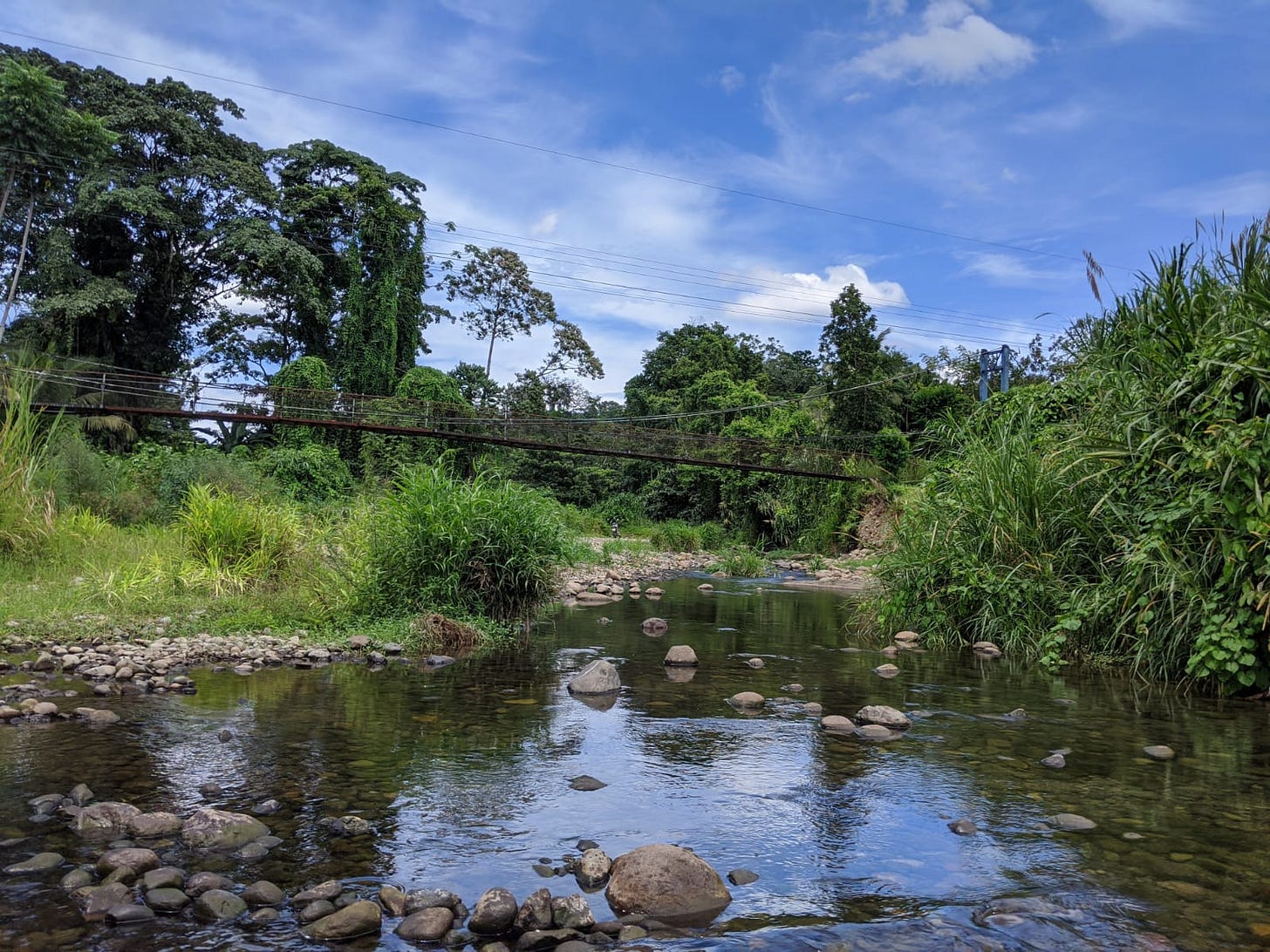Welcome to this latest edition of From a Climate Correspondent. If you'd like to support us, you can invite us for a coffee over at our Patreon page. Thanks for reading!

A woman in Talamanca Cabécar sorts through food donated for a delivery to Costa Rica’s capital. Image: Jocelyn Timperley
We arrive at the gate to the indigenous territory, a five hour drive from Costa Rica’s capital and my first reporting trip since the pandemic began, to realise we don’t in fact have the correct papers to pass. We are heading to a territory of the Cabécar indigenous people, but we soon realise the gate we have ended up at via Google maps enters the neighbouring BriBri territory - Cabécar is on the far side around an hour’s through this territory; it’s own entrance is several hours drive further around.
I’m here with Costa Rican photographer José Diaz to report for Climate Home News on an initiative run by a group of women in the Talamanca Cabécar indigenous territory - a crop exchange to increase resilience in the face of the pandemic and reliance on imported goods.
Many of Costa Rica’s indigenous communities have also put strict limits on entrance to the territories in a bid to protect themselves from COVID-19, and we only have permission to enter Cabécar. We’re lucky this time though - the guard makes a phone call and allows us through a few minutes later, after ensuring we have masks and hand sanitiser.
The restrictions on entry, the sanitary measure, and the Cabécar food exchange are all part of a larger care and recovery plan for the area in response to COVID-19.
Alongside several other elements, this include plans to start a “living museum” to protect the huge variety and knowledge of seeds currently held by the local people.
Museum of the seed
The idea of the seed museum is not to lock away seeds in a seed bank, Svalbard-style. Instead, it aims to help keep the cultural knowledge of these different varieties alive within families. In this way, ancestral practices to conserve seeds will be kept alive, says Levi Sucre Romero, an indigenous Costa Rican leader from the neighbouring Bribrí de Talamanca territory and a coordinator of the recovery plan in Talamanca Cabécar.
Like other indigenous peoples in Costa Rica, the Talamanca Cabécar hold and cultivate a a large variety of crops, from varieties of bananas and plantains to different fruits you are unlikely to even find in Costa Rica’s supermarkets. They typically grow these in an agroforestry system, where each family produces small amounts of different fruit and vegetables - unlike the huge Cavendish banana monoculture farms which are found in much of the country.

The Talamanca Cabécar grow several varietes of banana and plantain - including this purple “Morado” variety. Image: Jocelyn Timperley
The museum will be “built” by families preserving the seeds and information of a particular variety of plant in their homes, Maricela Fernández, president of the Kabata Könana women’s association in Talamanca Cabécar, tells me.
“For example, there are several varieties of corn: there is white corn, yellow corn, pujagua corn, many,” she says as we sit sheltering during a heavy afternoon downpour so loud we have to pause the interview a few times. “So if I keep the pujagua corn, I have to understand what its meaning is for me and the importance of that seed, how I plant it, in what month I [should] plant it, what are its characteristics. So each family is responsible for producing a seed and harvesting it and continuing to maintain it.”
Through this network, each family will know every year to reproduce that seed, to distribute it, adds Levi Sucre Romero, an indigenous Costa Rican leader from the neighbouring Bribrí de Talamanca territory and a coordinator of the recovery plan in Talamanca Cabécar.
The system is therefore a way to reinforce knowledge that is already in the community in a more formalised way. “What we want is that our native seed is not lost, [...] because if it is lost we will no longer have products in the community,” adds Fernández.
Thinking forwards
When the people and the leaders were discussing this, we came to a big conclusion, says Sucre Romero. “It is necessary, in these times, to include new concepts, and even technologies to traditional knowledge. If not, we will not survive. So, this concept of a living seed museum applies new concepts, even a little bit of new technology, combined with knowledge.”
The information about the seeds will also be written and stored digitally, says Fernández. In part, this is a way to ensure the local culture and knowledge is respected by those coming from outside to work with the community, she adds. “Many times [institutions] have imposed on us and it has not worked for us,” she says. “They are welcome to support us, but it has to be based on our work guide.”

A bridge in the Talamanca Cabécar territory. Image: Jocelyn Timperley
The idea of each family being a protectorate of a certain seed has an added humanity that can not be simply stored on a computer. Sucre Romero even hopes it could open up the prospect of cultural tourism to share this indigenous knowledge. “[We can tell them] let's talk to xxx, she handles the black bean seed, and she is going to tell you the story of how indigenous knowledge is managed, how it is protected and how to reproduce it,” he says. "And so we can do a whole route.”
And perhaps this system can also help strengthen links with scientists. “The indigenous communities have a lot of information and maybe sometimes they don't have the spaces for having the interchange with scientists,” says Jorge Cole Villalobos, a social anthropologist and technical assistant at Costa Rican environmental NGO Fundación Neotrópica.
“It's something that we have to work on more. They have observed the traditional ecosystem for many, many years and they also remember changes that have happened before.”
Must reads from the region
A new Latin America foreign policy agenda for the next administration, NACLA, Over 100 organisations working on issues related to Latin America and the Caribbean have sent letters to the two US presidential candidates calling for a policy of non-intervention, cooperation and mutual respect in the region.
Latin America unites to fight global inequalities in new regional pact, Kimberly Brown. Researchers and social movements across Latin America have joined forces to push for, and collaborate on, creating real systemic change.
What else I’m reading
I’m a recent convert to Audible and lately have been listening through Octavia E Butler’s two dystopian science fiction Parable books, The Parable of the Sower and The Parable of the Talents. I’m way late to the game here, but can add to the chorus of voices recommending them. Both written over 20 years ago now, Butler also artfully weaves in climate change as one of several backstories to explain how things got so bad - and in doing so highlights its strong overlap with economic and racial justice.
Who we are
From A Climate Correspondent is a weekly newsletter run by four journalists exploring the climate crisis from around the globe.
Lou Del Bello is an energy and climate journalist based in Delhi, India.
Jocelyn Timperley is a climate journalist based in San José, Costa Rica.
India Bourke is an environment journalist based in London, UK.
Mat Hope is investigative journalist based in Nairobi, Kenya.


